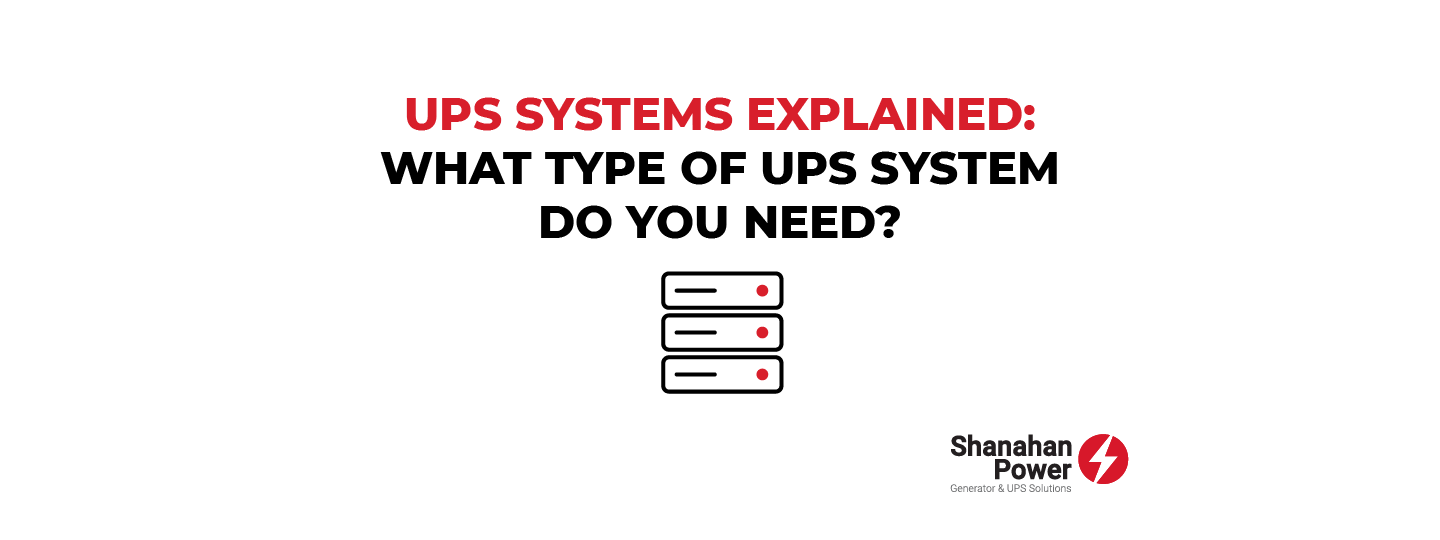UPS Systems Explained: What Type Of System Do You Need?
A UPS System is an essential part in a businesses’ continuity plan – without one, systems that rely on a continuous power supply will not function as they should and can cause major failures that result in downtime, loss of data and even damage to critical equipment.
When choosing a UPS system, it is important to consider the amount of time required to safely shutdown the system in the event of a power outage. For most systems, a few minutes of backup power is sufficient. However, for mission-critical applications pairing your UPS system with a standby generator may need to be considered.
Types of UPS Systems
There are three main types of UPS systems: standby, line interactive, and online.
Standby UPS Systems
Standby UPS systems provide power protection from surges and outages, but do not filter out power fluctuations. Standby UPS systems are typically used in applications where power quality is not a critical concern.
Line Interactive UPS Systems
Line interactive UPS systems provide power protection from both surges and outages, as well as filtering out power fluctuations. Line interactive UPS systems are typically used in applications where power quality is a critical concern, such as servers, networking equipment, and medical equipment.
Online UPS Systems
Online UPS systems provide the highest level of power protection by filtering out surges, outages, and power fluctuations. Online UPS systems are typically used in mission critical applications where downtime is not an option, such as data centres and industrial control systems.
Shanahan Power specialises in UPS Systems for businesses of all sizes across a range of industries – contact us to find out more about the range of UPS Systems available and advice on how to prepare your business for power outages.

